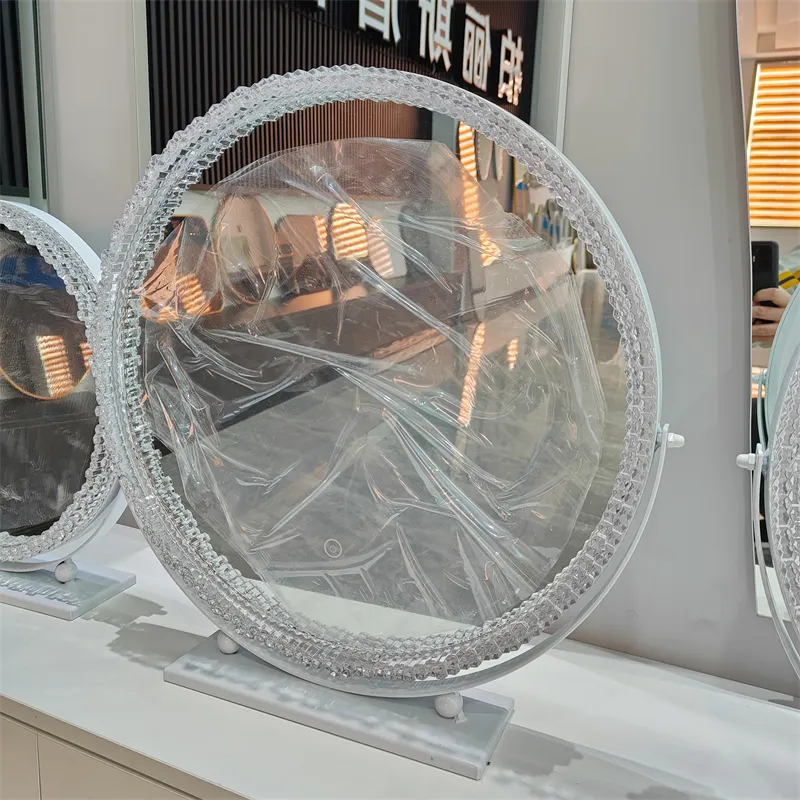Dec . 09, 2024 17:45 Back to list
Different Variations of Glass Coatings for Enhanced Performance and Aesthetics
Different Types of Glass Coating Enhancing Performance and Aesthetics
Glass is a versatile material widely used in modern architecture, automotive design, and countless applications in everyday life. To enhance its functionality and aesthetics, various glass coatings have been developed. These coatings serve multiple purposes, from improving energy efficiency to providing added protection against environmental elements. In this article, we will explore the different types of glass coatings, their purposes, and their benefits.
1. Low-E (Low Emissivity) Coatings
One of the most common types of glass coatings is the Low-E coating, which is a thin layer of metallic materials applied to the glass surface. Low-E coatings are designed to minimize the amount of infrared and ultraviolet light that can pass through the glass without compromising the visible light that enters. This coating effectively reflects heat back into a room during winter while keeping it out during summer, making buildings more energy-efficient. Low-E glass is a preferred choice for windows in residential and commercial applications, helping to reduce energy costs and improve indoor comfort.
Reflective coatings are often used in commercial and residential buildings to enhance privacy and reduce glare. These coatings are applied to the glass surface to create a mirror-like finish that reflects a significant portion of sunlight. This not only helps in controlling heat gain but also aids in reducing solar glare within indoor spaces. Reflective glass is popular in high-rise buildings and curtain wall systems, where it can also add aesthetically pleasing elements to the structure while improving energy performance.
3. Tinted Coatings
Tinted glass coatings involve the addition of color to the glass during the manufacturing process or through a post-manufacturing application. These coatings reduce the amount of visible light transmitted through the glass, resulting in a darker appearance. Tinted glass is often used in buildings and vehicles to provide UV protection and reduce solar heat gain. The varying degrees of tint available allow architects and designers to achieve specific aesthetic goals while also improving energy efficiency.
types of glass coating

4. Self-Cleaning Coatings
Self-cleaning glass coatings utilize advanced technology to make glass surfaces easier to maintain. These coatings are often made with titanium dioxide, which has photocatalytic properties. When exposed to sunlight, this coating breaks down organic dirt and grime on the glass surface, allowing rainwater to wash away the remains. Self-cleaning glass is widely used in high-rise buildings and hard-to-reach windows, reducing the need for frequent cleaning and maintenance. This innovation not only saves time and labor costs but also enhances the longevity of the glass.
5. Anti-Reflective Coatings
Anti-reflective coatings are designed to minimize glare and reflections on glass surfaces, making them particularly useful in optical applications, such as eyeglasses and displays. By reducing the amount of light that reflects off the glass, these coatings improve visibility and reduce eye strain. The technology behind anti-reflective coatings can also be applied to architectural glass, enhancing the aesthetics of a building while improving outlook and viewing experiences.
6. Safety and Security Coatings
For applications where safety and security are paramount, specialized coatings are available that reinforce glass surfaces, making them more resistant to impact and shattering. These coatings can be applied to residential, commercial, and automotive glass, providing an additional layer of protection against accidents and break-ins. Laminated glass often incorporates such coatings, delivering both safety benefits and improved acoustic insulation.
Conclusion
Glass coatings are essential for enhancing the performance, durability, and aesthetics of glass products across various applications. From Low-E coatings that maximize energy efficiency to self-cleaning solutions that reduce maintenance, these innovations contribute significantly to modern architecture and design. As technology continues to evolve, we can expect even more advanced glass coatings that will further improve the functionality and appeal of this timeless material. Whether for residential, commercial, or automotive use, the right glass coating can make all the difference in achieving sustainable and stylish solutions.
-
Safety and Style with Premium Laminated Glass Solutions
NewsJun.24,2025
-
Reinvents Security with Premium Wired Glass
NewsJun.24,2025
-
Premium Float Glass Line for Modern Architecture
NewsJun.24,2025
-
Low Emissivity Glass for Energy-Efficient Architecture
NewsJun.24,2025
-
High-Performance Insulated Glass Solutions for Modern Architecture
NewsJun.24,2025
-
Elevates Interior Style with Premium Silver Mirror
NewsJun.24,2025
Related PRODUCTS














